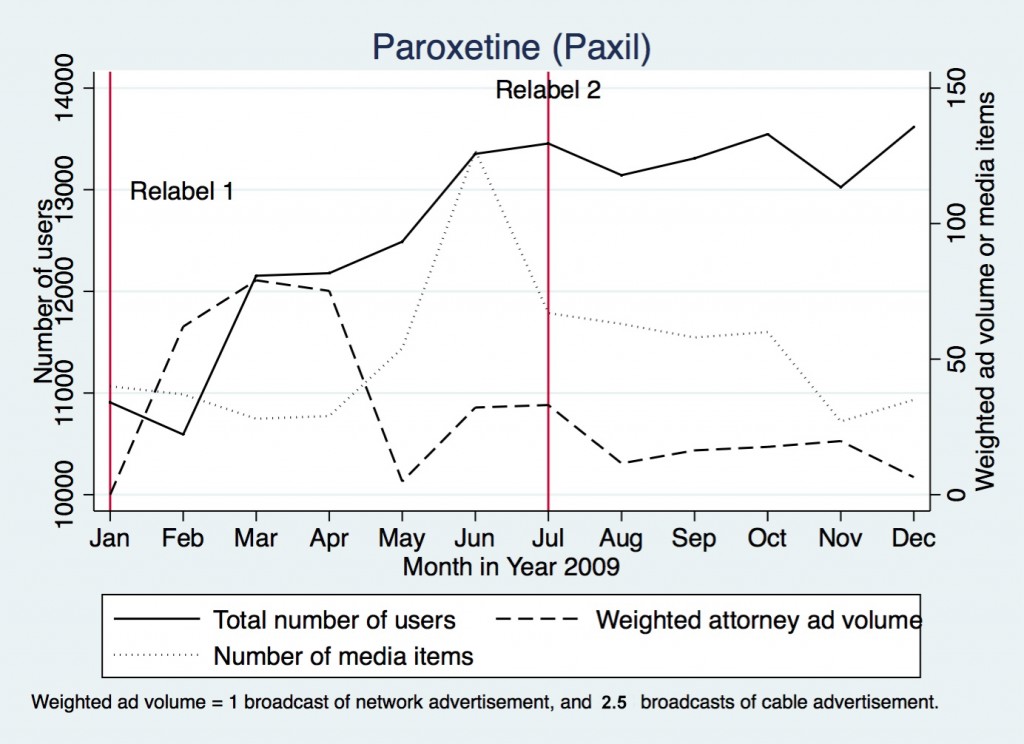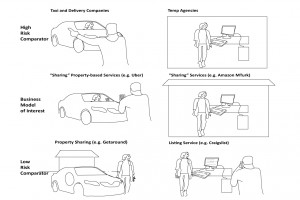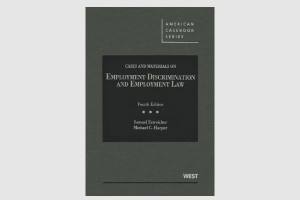I study business law and business practices, particularly in the context of the workplace. I have also collaborated on studies relating to law and technology, and consumer decisionmaking in response to mass advertising. I am currently working on a book about the history of employment law.
Below is a summary of published and forthcoming research articles.
Enslaved Agents: Business Transactions Negotiated by Slaves in the Antebellum South
This article explores the law of agency as applied to enslaved workers in the antebellum South between 1798 and 1863. In particular, I examine legal disputes involving the delegation of agency power to enslaved workers. Southern courts generally accepted that an enslaved worker could serve as business agent for his or her slaveholder, which often meant binding a third party to a transaction negotiated or performed by an enslaved person.
These cases provide a window into business practices in slave states, where enslaved workers conducted business on behalf of slaveholders in a variety of contexts. While agency law served the economic interests of individual slaveholders – who could then avoid hiring paid labor for the same work – it also at times conflicted with the ideology of white supremacy and the associated southern laws meant to enforce racial dominance. Agency law bestowed the slaveholder’s power on an enslaved worker in transactions with third parties, often white businessmen who later sought to unwind the deal. The law of agency also conflicted at times with state laws that prohibited sales and business dealings with slaves. Nevertheless, southern courts frequently sided with slaveholders, who insisted that their powers could be delegated to enslaved workers.
–forthcoming in the Arizona Law Review. Access the full article on SSRN.
Does Lawyering Matter? Predicting Judicial Decisions from Legal Briefs, and What that Means for Access to Justice
This research collaboration with Charlotte Alexander (Georgia State University), and a research team from MITRE — Karl Branting, Paul Morawski, Carlos Balhana, Craig Pfeifer, and Sam Bayer will appear in the Texas Law Review in 2021.
This study uses linguistic analysis and machine learning techniques to predict summary judgment outcomes from the text of the parties’ briefs. We test the predictive power of textual characteristics, stylistic features, and citation usage, and find that citations to precedent – their frequency, their patterns, and their popularity in other briefs – are the most predictive of a summary judgment win. This suggests that good lawyering may boil down to good legal research. However, good legal research is expensive, and the primacy of citations in our models raises concerns about access to justice. Here, our citation-based models also suggest promising solutions. We propose a freely available, computationally-enabled citation identification and brief bank tool, which would extend to all litigants the benefits of good lawyering and open up access to justice.
— Watch our presentation at Stanford’s Codex Meeting on Youtube.
Opportunity Discrimination: A Hidden Liability that Employers Can Readily Fix
This article applies a model of workplace advancement where big employment decisions — like promotions and pay raises — are influenced in part by the disparate distribution of smaller opportunities over time. These smaller opportunities generally do not qualify as “adverse employment actions” for the purpose of a discrimination claim under Title VII of the Civil Rights Act. However, their legal significance has been underestimated. The disparate denial of smaller opportunities has been successfully used as evidence of disparate treatment when plaintiffs are later denied a big opportunity.
— Access the full article on SSRN.
Does Attorney Advertising Stimulate Adverse Event Reporting?
This study, in collaboration with economist Brian Chen, is the first to investigate whether drug injury advertising volume is associated with increased adverse event reporting through the Federal Adverse Event Reporting System (FAERS). The study analyzed 412,901 adverse event reports to FAERS, involving twenty-eight groups of drugs targeted in drug injury advertising over a one-year period.
— Access the full article on the Food & Drug Law Institute’s website.
The Legal Implications of the MeToo Movement
This Article examines the implications of the MeToo movement for employment law and employment practices. Going forward, employers are likely to face increased liability for harassment, and greater risks of public scandals. Beyond taking a more punitive approach to documented instances of harassment, employers are likely to modify standard language in executive employment agreements and privacy policies.
The Article explores how standard harassment policies may have contributed to the problems exposed by the MeToo movement. The Article advocates for transparent harassment policies that disclose the contextual factors that influence disciplinary decisions. Employers should also draft broader discrimination policies that treat discriminatory and harassing comments by supervisors as a breach of trust.
— published in the Minnesota Law Review
Drug Injury Advertising
Drug injury advertising, which solicits consumers for lawsuits against drug and medical device manufacturers, is a $114 million business. Yet little is known about how consumers respond to the medical information contained in those ads. This research applies insights from the field of marketing to the drug injury advertising context and further tests those insights through two experiments. Results suggest that some consumers are deceived by drug injury ads and that some types of advertising are more deceptive than others.
— Forthcoming, Yale Journal of Health Policy, Law & Ethics, with Jesse King
Harassment Trainings: A Content Analysis

This study reviewed the content of 74 current and historical harassment spanning a period of 1980 to 2016. Results suggest that trainings are heavily influenced by early content developed in the 1980s and early 1990s. Changes in training content over time are like software updates, periodically adding new features without fundamentally altering the nature of the training. Consequently, contemporary trainings include large quantities of tangential legal information and overemphasize sexual conduct at the expense of other forms of harassment.
— Forthcoming, the Berkeley Journal of Labor & Employment Law
How Employers Profit from Digital Wage Theft Under the FLSA
This study examined 330 wage and hour cases to better understand how employers use timekeeping software. It focused specifically on three different types of wage theft: (1) rounding — where the software alters punch time in a preset increment; (2) automatic break deductions — where break time is automatically deducted from employee time; and (3) time shaving — where managers alter an employee’s recorded time. Federal rules are not effective at deterring these practices.
— Published in the American Business Law Journal
How Concepcion and Italian Colors Affected Terms of Service Contracts in the Gig Economy

This study examined terms of service contracts for several gig economy companies over time. The landmark 2011 Concepcion and 2013 Italian Colors Supreme Court cases ushered in an uptick in the adoption of arbitration provisions containing class action waivers.
— Published in the Rutgers Law Review (Symposium), with Bridget Schaaff
Does Attorney Advertising Influence Patient Perceptions of Pelvic Mesh?
This study surveyed patients waiting for appointments at urology offices. This interdisciplinary collaboration with medical doctors and a marketing expert examined whether those who were exposed to a high volume of attorney advertising held different perceptions of pelvic mesh.
— Published in Urology, with Jesse King, Vincent Lucente, Sonia Ephraim, Miles Murphy & Eileen Taff.
The Hacking of Employment Law

Employers can use software in ways that erode employment law. Software exploits outdated regulations that do not anticipate the scale and precision with which employers can manage and manipulate the work relationship. Employers can also use software to engage in lawful workaround tactics that avoid triggering some or all of the costs of complying with employment law. The result is a weakened employment law regime, where legal rules struggle to keep up with employers’ software-enabled innovations in noncompliance, or are rendered irrelevant as employers innovate in spaces that regulation simply does not reach.
— Published in the Missouri Law Review, with Charlotte Alexander
When Timekeeping Software Undermines Compliance
Electronic timekeeping is a ubiquitous feature of the modern workplace. Sometimes this software also undermines wage and hour law, allowing bad actor employers more readily to manipulate employee time cards, set up automatic default rules that shave hours from employees’ paychecks, and disguise edits to records of wages and hours.
— Published in the Yale Journal of Law & Technology, with Charlotte Alexander & Zev Eigen.
Download article
Using Contract Terms to Detect Underlying Litigation Risk: An Initial Proof of Concept
This preliminary study examines whether lawyers inadvertently broadcast their internal assessment of a client’s litigation risk by including certain provisions in their form contracts. To answer this question, I estimate the litigation risk of a sample of companies and then identify provisions of their form contracts statistically associated with those risk scores. I find that the presence of certain contract provisions intended to mitigate a particular litigation risk do a reasonably good job of sorting companies into “higher risk” and “lower risk” buckets. I then discuss whether government agencies could or should use this types of information in targeting companies for enforcement, and the implications for attorney decision-making.
— Published in the Lewis & Clark Law Review (Symposium).
Estreicher, Harper & Tippett’s Employment Discrimination & Employment Law: The Field as Practiced (5th Edition, West)
The new edition includes “Practitioner Perspectives,” in which leading practitioners describe their day-to-day work and area of specialization. Cases are accompanied by notes that test a student’s basic understanding of the material (labeled “Test Your Understanding of the Material”), as well as informative notes providing context. The new edition includes a comprehensive Teacher’s Manual, with case briefs and note answers. Adopting professors have access to a password protected teaching website, containing Socratic questions and answers, exercises, and sample employment documents.
Association of Attorney Advertising and FDA Action with Prescription Claims:
A Time Series Segmented Regression Analysis
This study, with economist Brian K. Chen, examined whether attorney-sponsored TV ads soliciting consumers for lawsuits against pharmaceutical companies was associated with changes in medicare prescription claims for the drug “featured” in the advertising. We found that attorney advertising tended to concentrated in the weeks and months surrounding FDA action, making it difficult to disentangle the effect (if any) of the advertising from FDA action. We found no evidence that attorney advertising decreased prescription rates.
— Published in Drug Safety, with Brian K. Chen.
Medical Advice from Lawyers:
A Content Analysis of Advertising for Drug Injury Lawsuits
This study examines the prevalence of deceptive content in attorney-sponsored TV ads soliciting consumers for lawsuits against pharmaceutical companies. It then discusses the legal complexities of regulating deceptive content in such advertisements. Published in the American Journal of Law and Medicine.
— Published in the American Journal of Law and Medicine
Robbing a Barren Vault:
The Implications of Dukes v. Wal-Mart for Cases Challenging Subjective Employment Practices
This article examines federal opinions from 2005-2011 challenging subjective employment practices under a ‘disparate impact’ or ‘pattern or practice’ theory to assess the likely impact of Dukes v. Wal-Mart on such cases. Although the Wal-Mart ruling favors employers, results suggest that the ruling’s effect on employer selection practices will be muted by the low prevalence of such claims.
— Published in the Hofstra Labor & Employment Law Journal
UTSA Preemption and the Public Domain:
How Courts Have Overlooked Patent Preemption of State Law Claims Alleging Employee Wrongdoing
 This article, co-written with Charles Tait Graves, examines an overlooked preemption argument available to lawyers defending trade secret cases. In particular, state tort claims alleging theft of information that does not meet the UTSA’s definition of a “trade secret” may be preempted by federal patent law, if the claim involves potentially public information.
This article, co-written with Charles Tait Graves, examines an overlooked preemption argument available to lawyers defending trade secret cases. In particular, state tort claims alleging theft of information that does not meet the UTSA’s definition of a “trade secret” may be preempted by federal patent law, if the claim involves potentially public information.
— Published in the Rutgers Law Review.
The Promise of Compelled Whistleblowing
What the Corporate Governance Provisions of Sarbanes Oxley Mean for Employment Law
This article examines the extent to which disclosure-related liabilities that Sarbanes-Oxley imposes on attorneys, executives and audit committee members amount to compelled whistleblowing. I then argue that punitive approaches to whistleblowing offer a number of previously unrecognized benefits. Sarbanes-Oxley is a good illustration of how whistleblower duties can be imposed on high-ranking employees, who are best able to bear the social penalties of whistleblowing. Indeed, compelled whistleblowing may serve to reduce the stigma of whistleblowing over time and increase organizational responsiveness to voluntary whistleblowers.
— Published in the Employee Rights and Employment Policy Journal.











